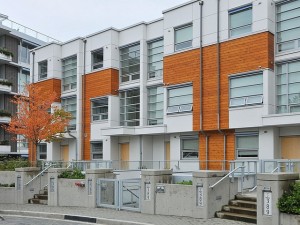
A carbon footprint is calculated by the total emissions of greenhouse gases into the atmosphere, according to the Environmental Protection Agency (the “EPA”). To eliminate this negative effect on the planet there has been a large shift in consumer focus from non-renewable energy sources to renewable alternatives. Green living is rapidly becoming more part of everyday life and most people are happy to incorporate green changes if the transition is easy for them. It also doesn’t hurt that green home improvements increase the value of a home.
Here are 10 Easy Tips to Go Green in the Home:
1. Insulation
Investing in extra sealing and insulation to prevent leaky ducts, walls, windows, and doors can improve your home’s energy draw by 20 to 30 percent.
2. In-floor heating
Radiant in-floor heating combined with a high-efficiency boiler eliminate the need for a gas-burning furnace. In-floor heating is installed in stone or concrete floors which are cool in the summer. This translates to less air conditioning in the summer which is better for the environment and for your wallet.
3. Paints and finishes
Use paints and finishes with low volatile organic compounds (“VOCs”) to reduce off-gassing. Off-gassing means that building materials can release chemicals into the air through evaporation. This evaporation can continue for years after the products are initially installed which means you continue to breathe these chemicals as you work, sleep and relax in your home. Painting walls and ceilings a light colour, such as white, allows light to bounce around meaning less electric light is required.
4. Flooring
Searching for hardwood flooring? Choose bamboo. Bamboo is environmentally friendly flooring due to its high yield and the fast rate at which it regrows. It takes just four to six years for bamboo to mature, compared to 50-100 years for typical hardwoods.
5. Electricity consumption meter
Install an electricity consumption meter that shows exactly how much electricity is being used. You can adjust your consumption accordingly. This will make you think twice about leaving the lights on.
6. Thermostat
Install a programmable thermostat that automatically lowers the temperature at night and when no one’s home.
7. Appliances
Replace your old appliances with energy-efficient appliances. Appliance use comprises about 18% of a typical home’s total energy bill, with the fridge being one of the biggest culprits. Getting rid of the old refrigerator could save you as much as $150 a year, according to the EPA. If any of your appliances is more than 10 years old, the EPA suggests replacing them with energy-efficient models that bear their « Energy Star » logo. Energy Star appliances use 10%-50% less energy and water than standard models.
8. Light bulbs
Purchase compact fluorescent bulbs or low-wattage halogens.
9. Household cleaners
Switching to green cleaners reduces air pollution both indoors and out. It minimizes exposure to harmful chemicals that can cause many negative health concerns. Choose plant-based products from companies that have a complete list of ingredients on their labels.
10. Locally-sourced materials
Always try to choose materials that are locally-sourced such as stone, plants and even food as they require less transportation and therefore use less fuel and cause less pollution.
Pssst… This brand new townhouse has a LEED Platinum Green building designation.
http://sothebysrealty.ca/en/property/british-columbia/vancouver-island-real-estate/victoria/42629




